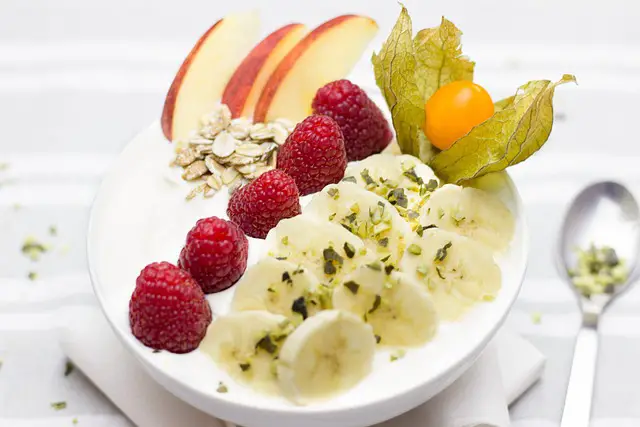Survival Shopping on 35 Essential Foods for Long-Term Storage During National Emergencies


In times of national crisis or war, ensuring access to long-lasting and shelf-stable foods becomes paramount for emergency preparedness. While fresh produce and perishable items may become scarce during prolonged conflicts, strategic shopping for foods with extended shelf lives can provide sustenance and security for individuals and families. From canned goods to dry staples, here’s a comprehensive list of foods to buy from the grocery store that can last for years, ensuring resilience and survival during day one of national wars.


Page Contents
Survival Shopping on Essential Foods for Long-Term Storage During National Emergencies

Canned Goods:
- Canned Beans: Varieties such as black beans, kidney beans, and chickpeas offer protein and fiber, and have a long shelf life.
- Canned Vegetables: Options like corn, peas, and carrots retain nutrients and flavor for extended periods, providing essential vitamins and minerals.
- Canned Fruits: Pineapples, peaches, and mandarin oranges in syrup or juice offer a source of vitamins and natural sweetness.
- Canned Fish: Tuna, salmon, and sardines packed in water or oil provide protein, omega-3 fatty acids, and essential nutrients.
- Canned Soups: Soups with a high liquid content, such as chicken noodle or vegetable, offer hydration and nutrition.
- Canned Tomatoes: Whole tomatoes, diced tomatoes, and tomato sauce serve as versatile ingredients for sauces, stews, and soups.
Dry Staples:
- Rice: White rice, jasmine rice, and basmati rice have a long shelf life and serve as a staple carbohydrate.
- Pasta: Dried pasta varieties such as spaghetti, penne, and rotini provide a source of energy and can be paired with canned sauces or vegetables.
- Dried Beans and Lentils: Red lentils, black beans, and split peas offer protein, fiber, and versatility in cooking.
- Oats: Rolled oats or steel-cut oats can be used for breakfast porridge, baking, or added to soups and stews.
- Flour: All-purpose flour or whole wheat flour serves as a base for baking bread, cakes, and other homemade goods.
- Dried Fruit: Raisins, apricots, and dates provide natural sweetness and can be eaten as snacks or added to cereal and baked goods.
Preserved Foods:
- Honey: With its antibacterial properties, honey remains edible indefinitely and serves as a natural sweetener and source of energy.
- Maple Syrup: Pure maple syrup can be stored for years and adds flavor to breakfast foods, desserts, and beverages.
- Jam and Preserves: Fruit preserves, jams, and jellies offer sweetness and flavor for spreading on bread or crackers.
- Pickles: Fermented or vinegar-brined pickles provide a tangy and crunchy snack or accompaniment to meals.
- Olives: Canned or jarred olives offer a source of healthy fats and can be used in salads, sandwiches, or pasta dishes.
Miscellaneous Items:
- Salt: Both table salt and sea salt have an indefinite shelf life and serve as a fundamental seasoning in cooking and preserving food.
- Sugar: Granulated sugar or brown sugar can be used for sweetening beverages, baking, or preserving fruits.
- Powdered Milk: Powdered milk can be reconstituted with water to provide a source of calcium and protein for drinking or cooking.
- Instant Coffee: Freeze-dried or instant coffee granules offer a quick and convenient way to prepare hot beverages.
- Tea Bags: Dry tea bags can be stored for years and provide a comforting and hydrating drink option.
- Bouillon Cubes: Beef, chicken, or vegetable bouillon cubes add flavor to soups, stews, and sauces when dissolved in hot water.
Beverages:
- Bottled Water: Sealed bottles of water provide hydration and can be stored for long periods in case of water supply disruptions.
- Juice Boxes: Individual servings of fruit juice in Tetra Pak containers offer hydration and a source of vitamins and minerals.
Condiments and Seasonings:
- Vinegar: White vinegar, apple cider vinegar, and balsamic vinegar serve as versatile condiments for seasoning and preserving food.
- Soy Sauce: With its high salt content, soy sauce remains usable indefinitely and adds depth of flavor to Asian-inspired dishes.
- Hot Sauce: Bottled hot sauce or chili paste provides heat and flavor for spicing up meals and adding variety to dishes.
Snacks and Treats:
- Trail Mix: A combination of dried fruits, nuts, and seeds offers a portable and nutritious snack option for sustained energy.
- Nut Butters: Peanut butter, almond butter, or cashew butter provide protein and healthy fats for spreading on crackers or bread.
- Crackers: Dry crackers such as saltines or whole wheat crackers serve as a crunchy snack or base for toppings and spreads.
- Chocolate: Dark chocolate or chocolate bars provide a source of comfort and energy during challenging times.
Hygiene and Household Items:
- Toilet Paper: Stock up on toilet paper rolls to ensure hygiene and sanitation during periods of uncertainty.
- Soap: Bar soap or liquid soap provides essential cleaning and hygiene for personal and household use.
- Hand Sanitizer: Alcohol-based hand sanitizer offers convenient disinfection and hygiene when soap and water are not readily available.
Conclusion:
By prioritizing the purchase of long-lasting and shelf-stable foods, individuals can ensure preparedness and resilience in the face of national emergencies, including wars or prolonged conflicts. By stocking up on canned goods, dry staples, preserved foods, beverages, condiments, snacks, and essential hygiene items, individuals and families can mitigate food insecurity and maintain nutrition and well-being during challenging times. However, it’s crucial to rotate stored food supplies regularly to prevent waste and ensure freshness. With careful planning and strategic shopping, individuals can build a robust pantry that provides sustenance and security when it’s needed most.







